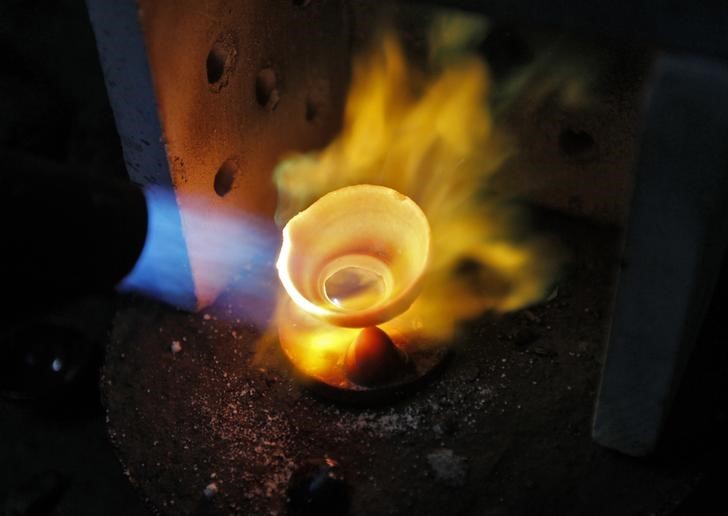By Ambar Warrick
Investing.com-- Gold prices moved little on Tuesday, hovering around key support levels as the dollar retreated from recent highs, while uncertainty over weakening metal demand in China weighed on copper.
Spot gold held on to mild gains from Monday, trading around $1,650.96 an ounce, while gold futures steadied at $1,656.20 an ounce by 19:30 ET (23:30 GMT)
Bullion prices benefited from a weakening dollar, as a slew of strong earnings on Wall Street boosted risk appetite and encouraged traders to move away from the greenback. But risk-heavy assets like stocks and foreign exchange were the bigger benefiters from this trend.
Better-than-expected earnings reports from major Wall Street firms also spurred heavy bargain buying, after stock markets plummeted last week.
But the outlook for gold remains under pressure from the prospect of rising U.S. interest rates, especially with inflation remaining stubbornly near 40-year highs. The Federal Reserve has also signaled that rates will end the year at higher levels than those seen during the 2008 financial crisis, amid a worsening economic outlook.
Markets are pricing in a nearly 100% possibility that the Fed will hike rates by 75 basis points in November, its third such consecutive hike.
Gold prices suffered steep losses this year, recently hitting near two-year lows as rising U.S. interest rates pushed up the opportunity cost of holding the yellow metal.
Most other precious metals also saw similar losses, with the dollar taking the lion’s share of safe haven demand.
Among industrial metals, copper prices fell for a second consecutive day amid increasing signs of slowing demand in China, the top importer of the red metal.
Copper futures hovered around $3.4075, after losing 0.5% in the beginning of the week.
Rio Tinto (ASX:RIO), the world’s second-largest miner, on Tuesday forecast softer iron ore shipments this year, signaling weaker industrial activity across the globe and especially in China, the firm's biggest customer.
China recently signaled that it has no intention of phasing out its zero-COVID policy, which has severely disrupted manufacturing activity this year. The move brewed more uncertainty over the future of the world’s second-largest economy.
But the country also maintained its accommodative monetary policy stance, while outlining more stimulus measures to help support growth.
These measures, coupled with signs of tightening copper markets, could help prices of the red metal recover this year.
